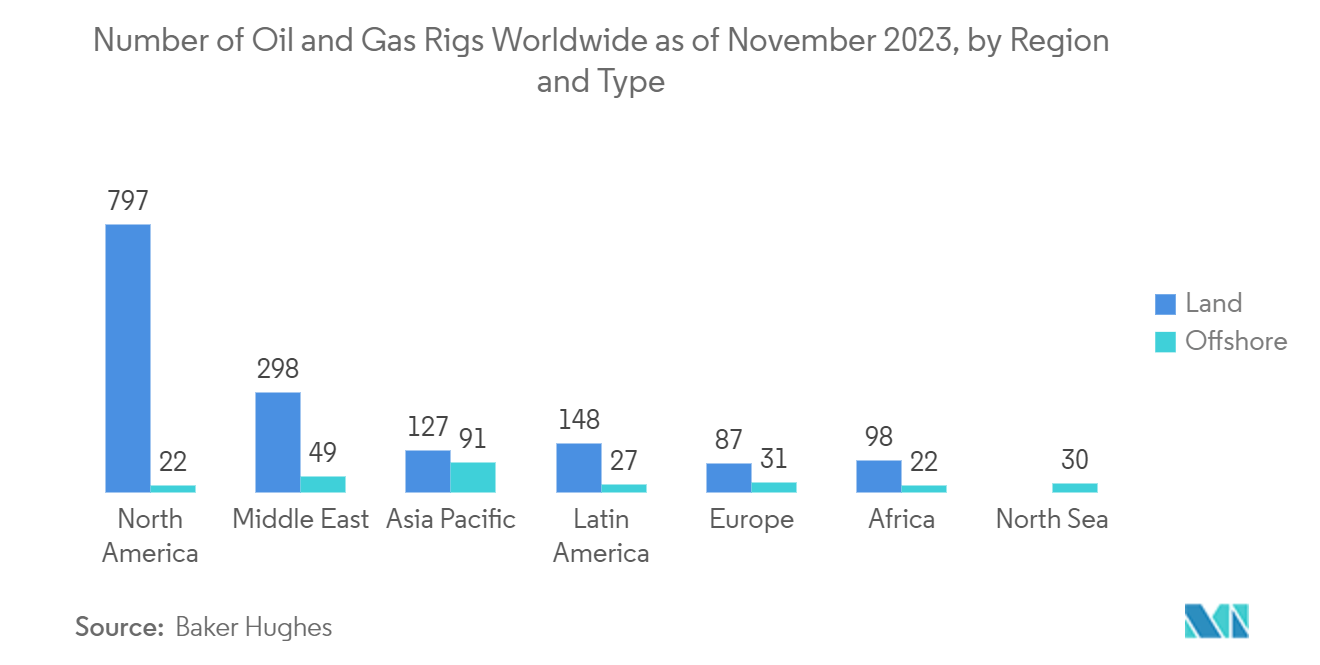Market Trends of Direct Current (DC) Motor Industry
The Oil and Gas Segment is Expected to Witness Major Growth
- Electric motors are crucial in oil and gas by delivering a steady and dependable power source to drill rig systems and equipment. DC motors are specifically utilized to ensure a consistent and reliable power supply to drilling rig systems and equipment. These motors are instrumental in supporting various operations, such as extracting, processing, storing, and transporting commodities like crude oil, petroleum, and natural gas.
- Oil and natural gas extraction from reservoirs in the oil and gas sector relies on drilling rig equipment for both onshore and offshore drilling activities. These drilling rigs extensively utilize DC motors as their power source. These DC motors are designed to withstand the challenging conditions commonly found in oil and gas settings, such as vibration, extreme temperatures, frequent impacts, and corrosive environments. Because of their exceptional performance, the utilization of DC electric motors in onshore oil and gas industries has notable significance.
- The International Energy Agency (IEA) has projected that global oil and gas demand will peak by 2030 despite the existing policy settings. According to the IEA, there will be an approximate increase of eight million barrels per day (bpd) in global demand by the decade's end, leading to a more significant requirement for offshore activities. Consequently, there is an anticipated surge in the market for AC motors due to the growth in offshore operations and investments. These motors are utilized in various offshore applications, including powering winches and windlasses, cement pumps, propulsion, and thrusters.
- DC motors are highly suitable for offshore drilling activities because they provide variable speeds to essential equipment such as mud pumps, draw works, rotary tables, and top drives. Offshore drilling rigs play a significant role in the global oil rig count, with 272 active rigs across the world in November 2023, over 91 of which are located in Asia-Pacific, as reported by Baker Hughes. The renewed search for offshore petroleum is driven by a combination of factors, including increased global energy demand, supply disruptions caused by the conflict in Ukraine, and crude oil prices that have remained elevated compared to pre-pandemic levels.

Asia-Pacific is Expected to Witness Significant Growth
- The Chinese DC motor market is poised for significant growth in the coming years. Several factors drive the market, including the increasing demand for EVs, the growing automation in the Chinese manufacturing sector, and the rising demand for consumer electronics in China.
- In China, smart manufacturing endeavors are anticipated to facilitate the utilization of industrial DC motors. The Ministry of Information Technology has reported initiating numerous smart manufacturing pilot projects in the country. Furthermore, as outlined in the 13th smart manufacturing five-year plan, the government intends to enhance its smart manufacturing system and achieve a comprehensive transformation of key industries by 2025. Such initiatives are expected to drive the adoption of DC motors across the country's sectors.
- With the rapid growth of India's population and its industrial sector, there has been a significant increase in the volume of wastewater. This alarming rise has prompted the country's need for wastewater treatment plants. The rising demand for nationwide municipal and sewage water treatment facilities primarily drives the growth. Water treatment plants heavily rely on pump and motor systems to efficiently and effectively move water through the treatment process. Consequently, the increasing demand for these treatment plants nationwide will also drive the demand for DC motors.
- Moreover, the market's expansion in this area is primarily due to technical advancements and the increased usage of automation technologies across various end-user industries. Other significant factors driving the demand for DC motors in the country include rapid urbanization, complementary technical improvements, favorable government regulations, and robust FDI inflows.


